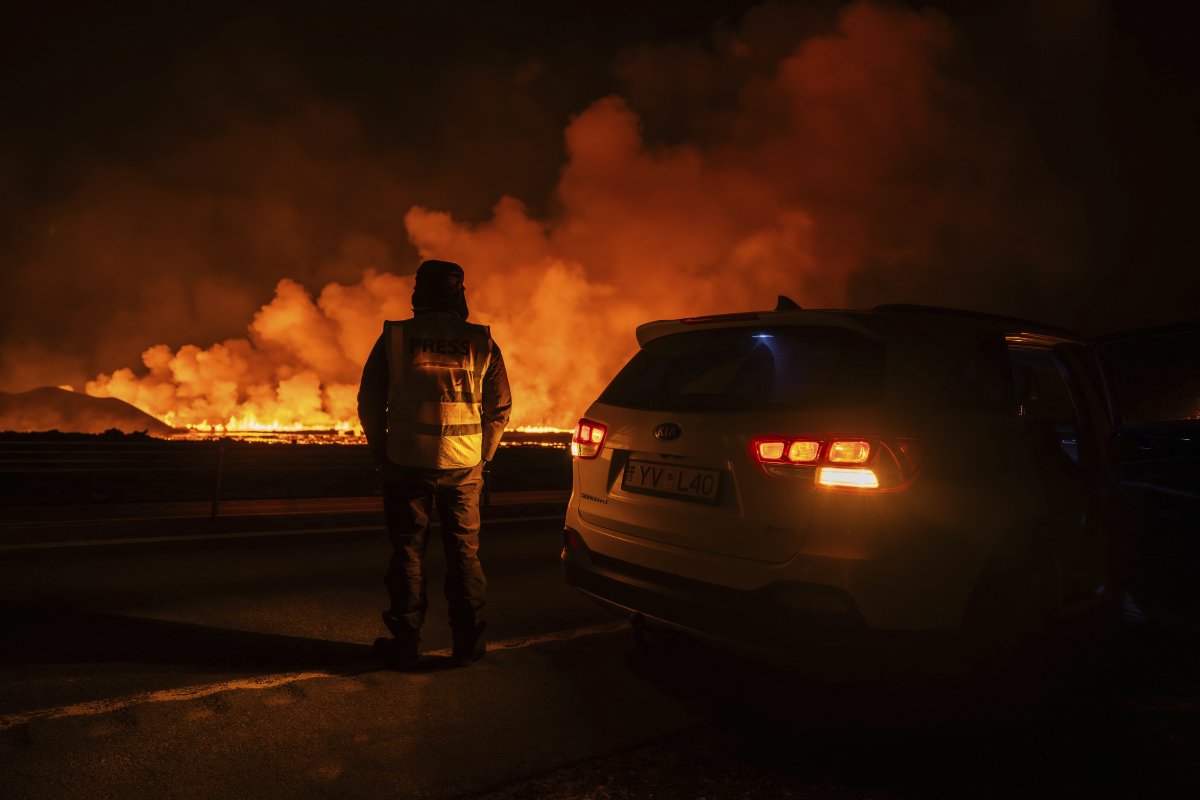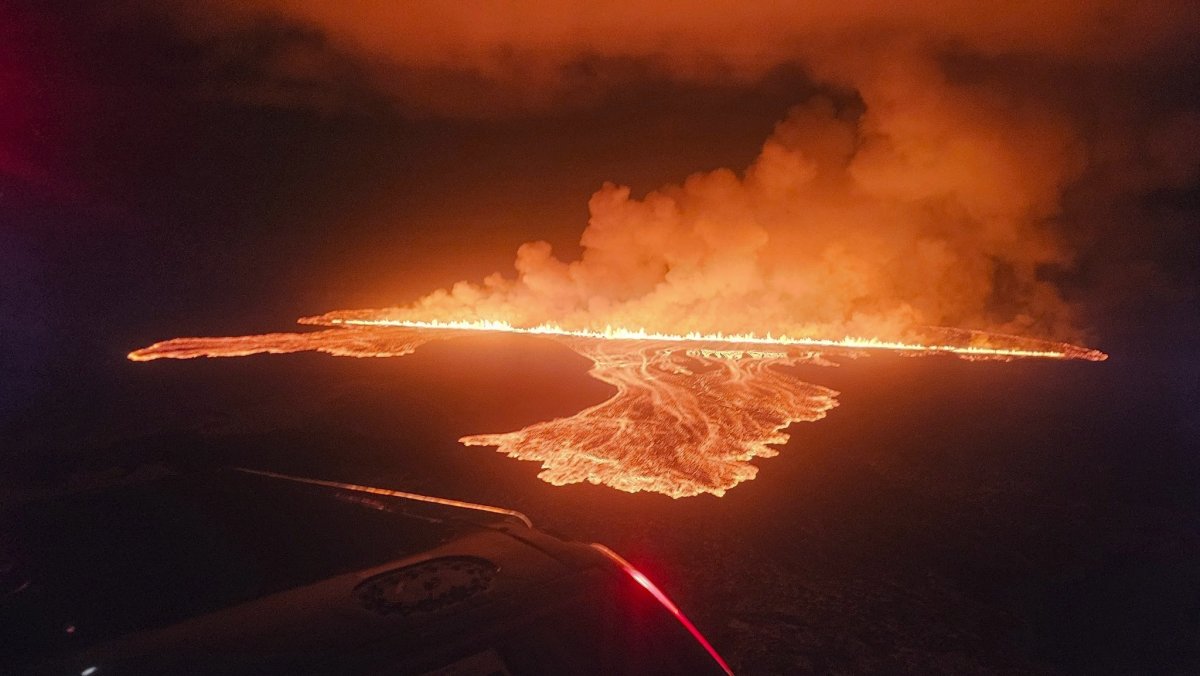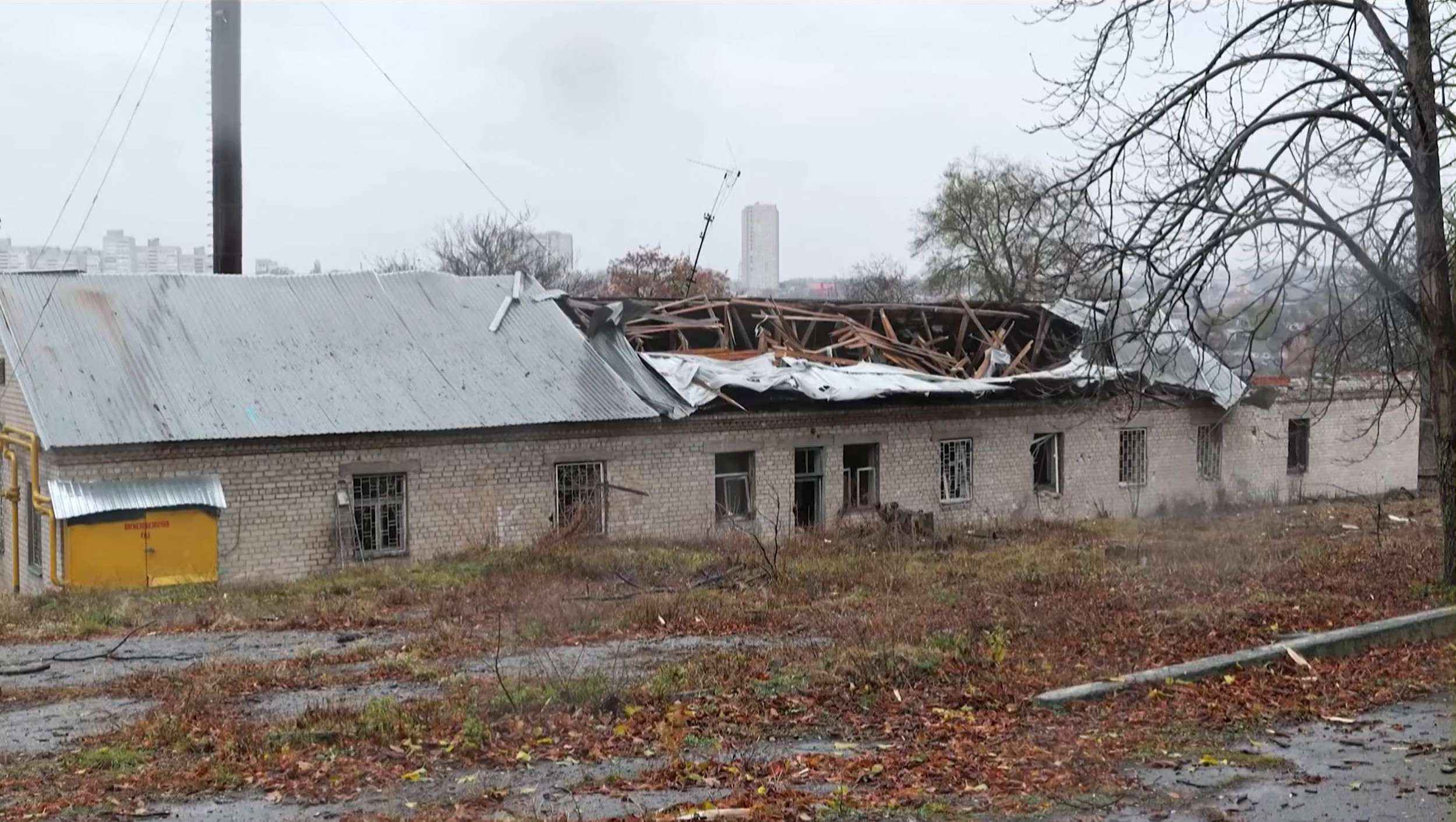For the seventh time in less than a year, Iceland's Reykjanes Peninsula has erupted into fiery spectacle, spewing molten lava from a fissure approximately 1.8 miles long.
The eruption, which began on Wednesday at 11:14 p.m. local time, marks yet another chapter in the region's growing geological unrest.
Iceland, a volcanic hotspot straddling the Mid-Atlantic Ridge, has long been familiar with eruptions. Yet the Reykjanes Peninsula, about 30 miles southwest of Reykjavik, has seen a surge in volcanic activity in recent years.
Once dormant for 800 years, the area is now experiencing something of a geological Renaissance.

"This activity will go on for maybe a decade, possibly decades," Tamsin Mather, professor of Earth sciences at the University of Oxford, told Newsweek. "Volcanism doesn't happen in a smooth fashion; it happens in pulses of activity and then quiet again."
The town of Grindavík, home to 3,800 residents, lies at the epicenter of this seismic activity. Already battered by previous eruptions, the latest event has forced the evacuation of 50 homes and even the iconic Blue Lagoon resort.
One particular concern is harmful gas emissions, which pose significant health risks to nearby residents.
"If the wind was blowing in the wrong direction, you could get really bad impacts on the air quality in Reykjavik, for example, which is a major area of population in Iceland," Mather said.
Mather explained that historical eruptions have even led to harmful gases reaching Europe's shores, but that the scale of these events is far below that threshold for now.
Despite the challenges, authorities report no immediate threat to air travel, a relief given the disruption caused by the 2010 eruption of Eyjafjallajökull, which grounded flights worldwide for months.
Are the Eruptions in Iceland a Long-Term Phenomenon?
Geologists warn that these eruptions could persist for decades—or even centuries.
"The last time we saw this, it lasted decades to hundreds of years," David Pyle, professor of Earth sciences at the University of Oxford, told Newsweek. "We're seeing the slow release of accumulated strain as the American Plate and the Eurasian Plate pull apart."
This slow-motion drama underscores Iceland's unique geology. Fissure-type eruptions, like those on the Reykjanes Peninsula, produce dramatic lava flows but are relatively low in explosivity.
Yet the potential for an underwater eruption—where magma meets seawater—raises concerns about short-lived but violent interactions that could release acidic steam and fine ash.
"One sequence of events that people have anticipated but that we haven't seen yet in this eruption is if the fissures propagate through Grindavik and then erupt underwater. Then there's a prospect of more violent eruptions," Pyle said.

Lessons for the World From Reykjanes Eruptions
The Reykjanes eruptions are not just a challenge for Iceland but a case study for scientists worldwide. Researchers are using cutting-edge techniques to monitor magma reservoirs and study how pressure builds and releases.
These eruptions, while relatively small in scale, are shedding light on fundamental questions about Earth's inner workings.
"One of the other things to answer is why does something sit peacefully for hundreds of years and then decide to switch on again?" asked Mather. "That's a very fundamental question about how our Earth works."
Challenges for the Future of Iceland
For Iceland's government, the ongoing eruptions are a logistical and existential dilemma.
"How do you cope with long-term uncertainty, particularly if you once lived in Grindavík?" Pyle questioned.
"We have incredible capacity to measure what's happening on the ground in real-time. However, these frequent eruptions pose significant challenges, particularly in the medium term."

With communities, major tourist attractions like the Blue Lagoon—which draws in more than 1 million visitors per year—and power stations under threat, authorities have begun building protective barriers and levies to direct lava flow.
Whether such infrastructure will stand up to decades, possibly even centuries, of eruptions remains to be seen.
Do you have a tip on a science story that Newsweek should be covering? Do you have a question about volcanoes? Let us know via science@newsweek.com.














)





 English (US) ·
English (US) ·